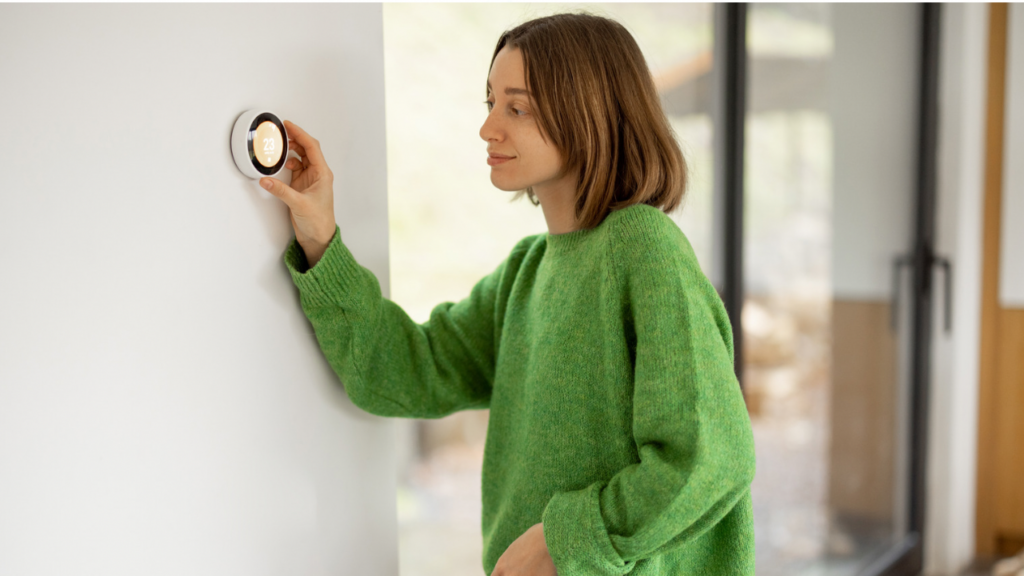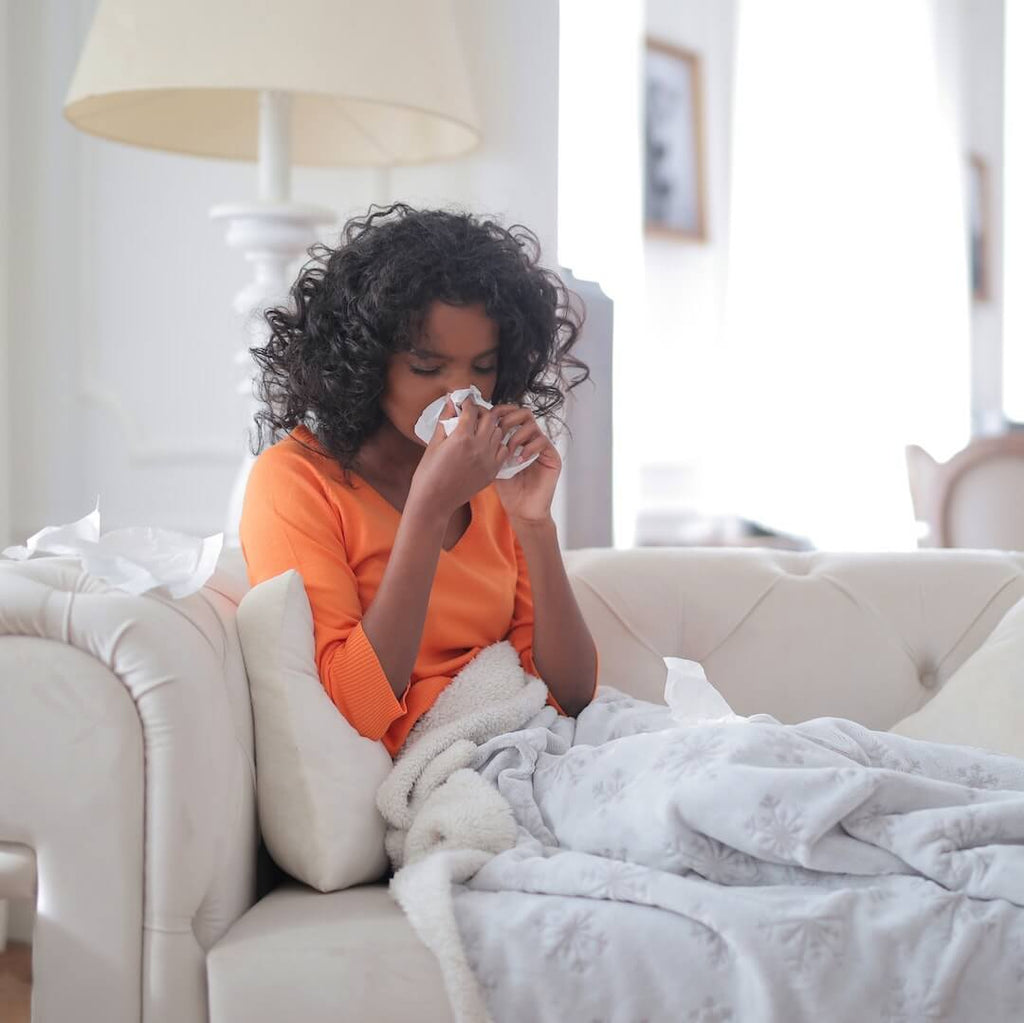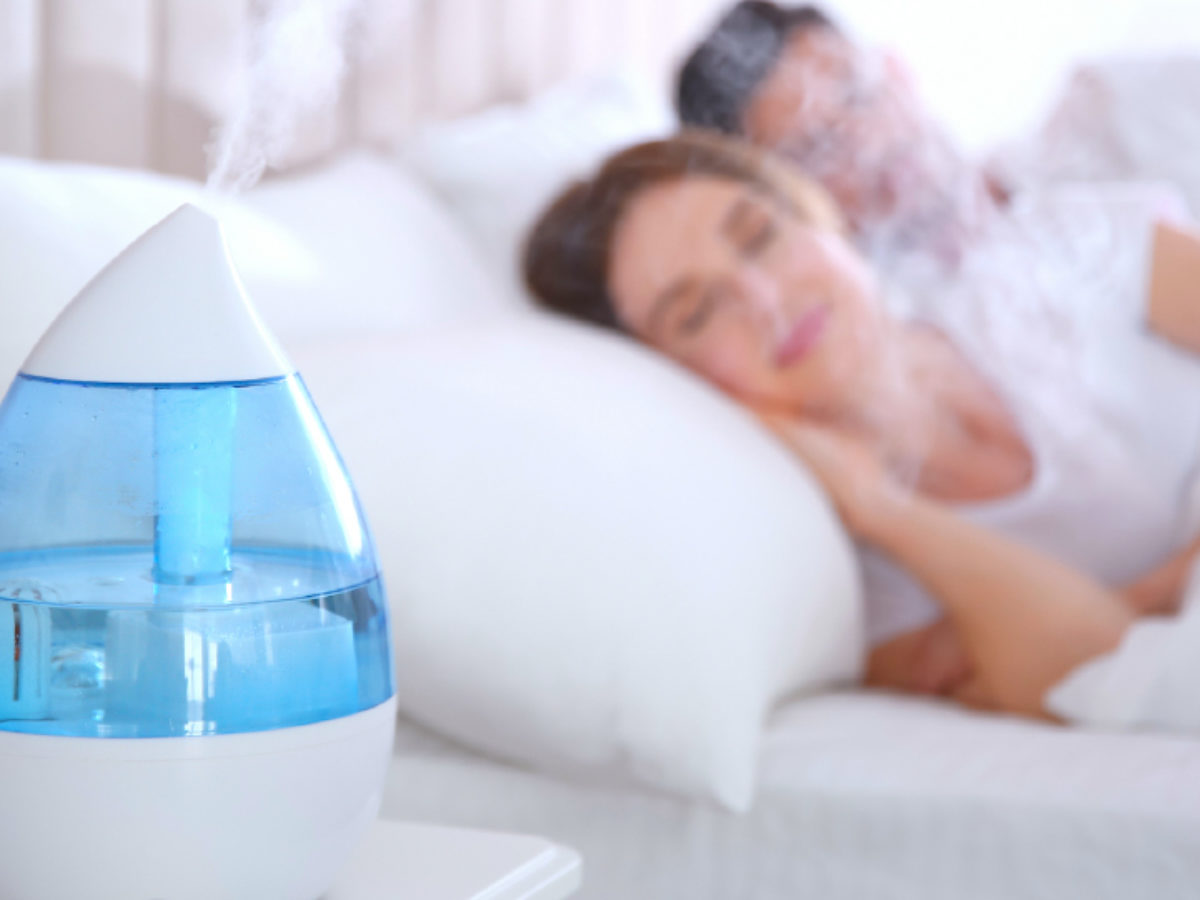Creating a comfortable and healthy indoor environment is crucial for a good night’s sleep and well-being. While temperature and lighting often take center stage, the humidity level of your bedroom is an essential factor that shouldn’t be overlooked. Maintaining the ideal humidity level can significantly impact your sleep quality, respiratory health, and the condition of your furniture and belongings. This article will explore the importance of humidity in the bedroom and guide you toward achieving the best humidity level for optimal comfort.
What Is Humidity?
Humidity is the percentage of moisture present in the air. It is typically measured as a percentage, with higher percentages indicating moisture. Relative humidity (RH) is the most commonly used metric to describe humidity levels. It represents the moisture percentage in the air and is relative to the maximum amount the air can hold at a specific temperature.
What Is the Best Humidity Level for Bedroom?
Image Credits: allergyasthmanetwork.org
The recommended humidity level for a bedroom typically falls between 30% and 50% RH. This range provides a comfortable and healthy environment for most individuals. However, personal preferences may vary, and certain conditions may require adjustments within this range.
Factors Influencing Humidity Levels in the Bedroom
1. Ventilation
Adequate ventilation is crucial in controlling humidity. When there is poor airflow, moisture can accumulate in the room, leading to higher humidity levels. Proper ventilation allows for the exchange of indoor and outdoor air, helping to regulate humidity. Opening windows, using exhaust fans, or installing a ventilation system can assist in maintaining optimal humidity.
2. Weather
The weather conditions outside can impact indoor humidity. In regions with high humidity, such as coastal areas or during the rainy season, the moisture content in the air can easily infiltrate your bedroom. Similarly, the air tends to dry during cold weather when heating systems run, resulting in lower humidity levels. Monitoring outdoor weather conditions and adjusting indoor humidity control measures can be helpful.
3. Indoor Plants
Plants release moisture through tiny pores on their leaves in transpiration. Numerous indoor plants in your bedroom, especially those with large leaves or high transpiration rates, can increase humidity levels. While indoor plants have several benefits, it’s essential to consider their impact on humidity, especially in a closed environment.
4. Activities and Water Usage
Various activities within the bedroom can introduce moisture into the air. For instance, taking hot showers, using a humidifier, drying wet clothes indoors, or even sweating can increase humidity levels. Being mindful of these activities and their impact on humidity can help you manage and control the moisture content in your bedroom.
5. Air Conditioning
Air conditioning systems play a significant role in controlling humidity. Most air conditioners have a dehumidification function that removes excess moisture from the air as it cools. When warm, humid air passes through the air conditioner’s evaporator coils, the moisture condenses and is collected, resulting in reduced humidity levels. Properly maintaining and using your air conditioning system can help manage humidity effectively.
6. Humidifiers and Dehumidifiers
Humidifiers and dehumidifiers are dedicated devices that directly influence humidity levels in a room. Humidifiers add moisture to the air and are useful in dry environments or during the winter when indoor humidity tends to be low. On the other hand, dehumidifiers remove excess moisture from the air and are beneficial in humid regions or when indoor humidity is too high. Using these devices appropriately can help you maintain a comfortable and healthy humidity level in your bedroom.
7. Insulation and Sealing
The insulation and sealing of your bedroom can impact humidity levels. Poor insulation can allow outdoor air and moisture to infiltrate the room, increasing humidity. Similarly, inadequate sealing around windows and doors can lead to air leakage, potentially affecting humidity levels. Ensuring proper insulation and sealing can help maintain more stable humidity levels.
8. External Factors
The location of your bedroom can also influence humidity. Bedrooms in basements or near water sources like bathrooms or kitchens may be more prone to higher humidity levels due to increased moisture infiltration. Additionally, if your bedroom has experienced leaks or water damage, it can increase humidity. Addressing any underlying issues and taking preventive measures can help mitigate these external factors. To avoid humidity in the bedroom, ensure you install the best flooring for the bedroom.
What Causes High Humidity Levels?
An increase in moisture in the air primarily causes high humidity levels. It can happen due to warm temperatures, proximity to large bodies of water, excessive indoor moisture sources like cooking or showering, and poor ventilation. Additionally, weather patterns such as rainy or tropical conditions can contribute to high humidity levels in certain regions.
Benefits of Maintaining Optimal Humidity in Your Bedroom
1. Promotes Better Sleep
Maintaining an optimal humidity level in your bedroom can improve sleep quality. Dry air can cause throat and nasal passages to become irritated, leading to snoring, coughing, and disrupted sleep.
Image Credits: sweetislanddreams.com
Conversely, excessive humidity can create discomfort in the air, impeding your capacity to initiate or maintain sleep during the night. Striking the right balance ensures a more restful sleep.
2. Respiratory Health
Proper humidity levels can alleviate respiratory issues and reduce the risk of infections. Dry air can dry out nasal passages and increase the chances of respiratory infections, while excessive humidity can promote the growth of mold, dust mites, and bacteria. Maintaining the ideal humidity range helps keep your respiratory system healthy and minimizes the risk of allergies and respiratory ailments.
3. Preservation of Furniture and Belongings
Overly dry and excessively humid environments can negatively impact furniture, musical instruments, artwork, and other belongings. Dry air can cause wood to crack, shrink, or warp, while high humidity can lead to mold growth, warping, and deterioration of materials. By maintaining proper humidity levels, you can preserve the longevity and condition of your valued possessions.
How Do I Know if I Need to Adjust My Bedroom’s Humidity?
Monitoring and adjusting the humidity level in your bedroom can contribute to a comfortable and healthy living environment. Several signs can indicate the need to adjust the humidity:
1. Physical discomfort: If you experience dryness in your throat, nose, or skin, it may indicate low humidity levels. On the other hand, excessive humidity can lead to dampness and difficulty breathing.
2. Condensation: Look for condensation on windows, walls, or mirrors. Excessive moisture buildup suggests high humidity levels that may require adjustment.
Image Credits: landmarkhomes.ca
3. Mold and mildew growth: High humidity encourages the breeding of mold and mildew, which can be visually detected on walls, ceilings, or furniture. Musty odors may also indicate their presence.
4. Allergy or asthma symptoms: If you notice an increase in allergy or asthma symptoms like sneezing, coughing, or wheezing, improper humidity levels could be a contributing factor.
5. Difficulty sleeping: Humidity extremes can disrupt sleep. Dry air can cause nasal congestion and discomfort, while excessive humidity can make the room feel stuffy and uncomfortable.
Tips for Optimizing Bedroom Humidity
Optimizing bedroom humidity is essential for a comfortable and healthy living environment. Here are some tips to help you maintain the ideal humidity levels in your bedroom:
1. Measure and monitor: Invest in a hygrometer to measure the humidity levels in your bedroom. The ideal range is typically between 40% and 60%.
2. Ventilation: Ensure proper ventilation by opening windows or using a fan. It helps to circulate air and prevent moisture buildup.
3. Dehumidify: If the humidity is consistently high, consider using a dehumidifier. This device helps remove excess moisture from the air, reducing humidity levels. Ensure you check out the best places to place your humidifier in your bedroom.
Image Credits: ventaair.com
4. Use air conditioning: Running an air conditioner not only cools the air but also helps to dehumidify it. If available, set the AC to a moderate temperature and use the “dry” or “dehumidify” mode.
5. Avoid drying clothes indoors: Hanging wet laundry indoors can increase humidity levels. If possible, dry clothes outside or use a well-ventilated area.
6. Fix leaks: Repair any plumbing leaks or water seepage issues promptly. Moisture from these sources can contribute to high humidity levels.
7. Use natural moisture absorbers: Place moisture-absorbing materials like silica gel packets or charcoal near areas prone to moisture, such as closets or cabinets.
8. Limit houseplants: While houseplants are great for air quality, they release moisture through transpiration. Limit the number of plants in your bedroom to control humidity levels.
What Are the Ideal Indoor Humidity Levels by Outdoor Temperature?
The ideal indoor humidity levels vary depending on the outdoor temperature. As a general guideline, it is recommended to maintain indoor humidity levels between 30% and 50% for optimal comfort and health. However, there are specific considerations based on the outdoor temperature:
1. Cold Weather
Image Credits: calldeans.com
During colder months, the air becomes drier when the outdoor temperature drops. Keeping indoor humidity levels around 30% to 40% is advisable to prevent excessive dryness, leading to respiratory issues, dry skin, and irritation.
2. Moderate Weather
In moderate temperatures, around 20°C to 24°C (68°F to 75°F), indoor humidity levels between 40% and 50% are generally comfortable and suitable for most people.
3. Warm Weather
In warmer climates or during the summer season, when the outdoor temperature rises, it is recommended to maintain indoor humidity levels between 30% and 50%. Higher humidity levels can lead to a humid environment, while lower levels can cause discomfort and dryness.
Frequently Asked Questions on Best Humidity Level for Bedroom
1. What does low indoor humidity cause?
Image Credits: geniani.com
Low indoor humidity can lead to various problems. It can cause dry skin, irritate respiratory passages, and worsen allergies. Additionally, low humidity can result in static electricity buildup, leading to unpleasant shocks. It can also damage wooden furniture and musical instruments, causing them to crack or warp. Furthermore, low humidity can increase the spread of airborne viruses and bacteria, impacting overall health and well-being.
2. Is it better to sleep in a humid or dry room?
The ideal sleep environment typically has a moderate level of humidity. While excessively humid and arid conditions can disrupt sleep quality, moderate humidity promotes better rest.
Image Credits: hillcroftphysicians.com
High humidity may lead to discomfort, increased sweating, and difficulty regulating temperature. On the other hand, dry air can cause dry skin, nasal congestion, and throat irritation. Maintaining a relative humidity between 40-60% creates a comfortable atmosphere, reducing sleep disturbances and enhancing overall sleep quality.
3. Is 70% humidity too high for a bedroom?
A humidity level of 70% in a bedroom can be considered high and may lead to discomfort. Higher humidity can promote mold growth, cause a stuffy atmosphere, and make sleeping difficult. Ideally, a bedroom’s humidity should range between 30% and 50%. To reduce humidity, consider using a dehumidifier, improving ventilation, and avoiding activities that generate moisture, like drying clothes indoors. Monitoring and maintaining an optimal humidity level can create a more pleasant and healthier bedroom environment.
4. Does opening windows reduce humidity?
Image Credits: rent.com
Opening windows can reduce humidity by allowing fresh air to circulate and carry moisture outside. However, the effectiveness of this method depends on external conditions. If the outdoor air is humid, opening windows may not be beneficial. Additionally, dehumidifiers or air conditioning systems can be more effective in reducing indoor humidity.
5. What is the ideal temperature for sleeping?
Image Credits: getcanopy.co
The ideal temperature for sleeping varies from person to person, but generally, a range of 60 to 67 degrees Fahrenheit (15 to 19 degrees Celsius) is recommended. This temperature range helps promote better sleep by keeping your body cool and facilitating the natural drop in core body temperature at night. However, personal preferences and external factors can also influence the ideal sleeping temperature for individuals.
























